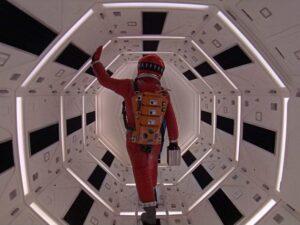The sci-fi genre has always been about expanding ideas. Fritz Lang’s 1927 Metropolis was groundbreaking for its time. Stanley Kubrick continued that tradition with 1968’s 2001: A Space Odyssey. Like Metropolis, Odyssey was another landmark of sci-fi. The film had it all. From deeper thoughts of existence to eye-popping visual effects. Kubrick, along with sci-fi legend Arthur C. Clarke, crafted a genre-defining masterpiece that went on to inspire several other iconic films. The film broke new technical and artistic ground long before crowd-pleasing space operas.
Whether it’s the questioning of evolution in 1979’s Alien or the artificial intelligence of 1982’s Blade Runner. Kubrick’s film would lay a foundation for all of that. Remember, 2001 came out only a year before Neil Armstrong landed on the moon. Like NASA’s dreams of going to the moon, Kubrick and Clarke had big plans for this movie.
The best word to describe the film is epic. It was a movie that wanted its story to be as vast as space itself. The story is ultimately about humans dominating Earth and finding a new home among the stars. But it’s not that simple. Kubrick and Clarke favored ambiguity with this type of script. While deep philosophical questions were posed, there were no easy answers. Stunning visuals did little to provide convenient explanations. And, yet, audiences can’t stop thinking about these cryptic visuals. Why is that?
Let’s take a closer look at 2001: A Space Odyssey.
WATCH: 2001: A Space Odyssey EXPLAINED
In The Beginning

The film begins at the dawn of mankind. A rousing symphony brings us into a prehistoric age. It’s a time of apes. With resources in short supply, the apes form factions. They battle for water amid a barren Earth.
The sun moves, and time passes for the defeated apes. The days are long and violent, and the nights are spent in caves. But one morning becomes one of the most eventful. The apes awaken to a strange object in their territory. A big, black slab has mysteriously shown up. Whatever this monolith may be, it holds a great power. The monolith grants the power of knowledge to these apes, even if it spooks them initially.
The apes use this knowledge to their advantage. Bones become tools and weapons for the apes, and nature is now dominated by these armed apes. They’ve learned to kill, granting them authority. With that authority, they start asking questions. Questions like, “Why not kill animals for meat?” and “Why not kill those apes who took our watering hole?” They don’t have to accept defeat. Not when they have weapons to beat up other apes with.
A victory is celebrated with a bone in the air. That useful bone soon transitions into a satellite. The timelines jump to our futures. The defiance of the apes has brought mankind to the stars. And it all started with violence, breaking the food chain. How much has changed since those old days? Technologically, a lot. Philosophically, not much. The apes wanted to conquer other apes, and humans wanted to conquer space. The target is bigger, but the desires are the same. It’s a cycle of violence we can’t break.
Lunar Secrets
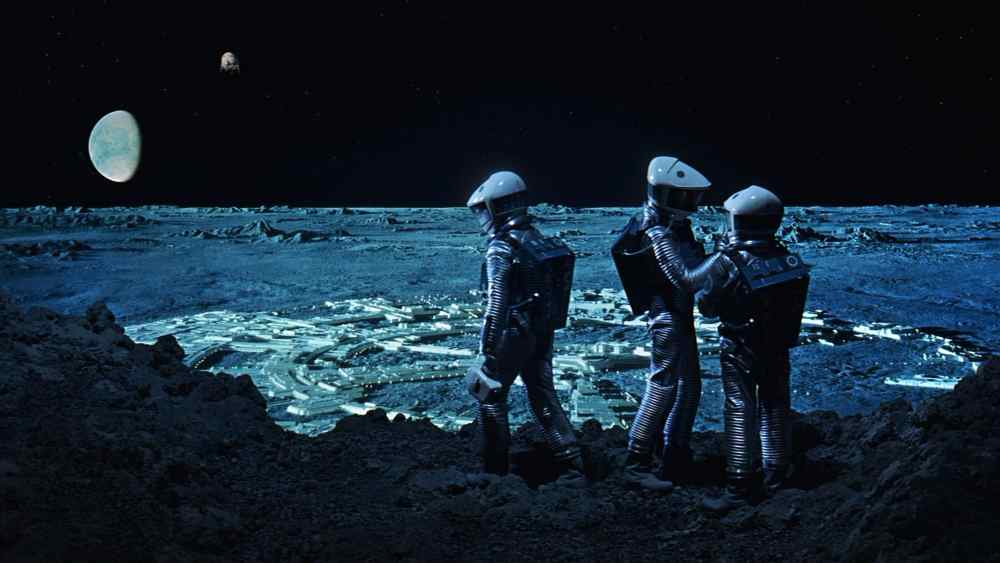
The obsession with our past coats this film. Learning about our origins forces the more challenging questions. Such as, “Are we alone in the universe?” The answer is sought by Dr. Heywood Floyd, played by William Sylvester. He’s hoping a lunar crater will give him a clue. That is after he takes a spin on the giant space wheel. After that, he’s off to America’s Clavius Base outpost to investigate.
The problem is that the base isn’t talking. The silence has only made the scientists more suspicious. Rumors swirl of an epidemic at the base. What kind of epidemic? Well, nobody knows for sure. Floyd deflects any questions about the base.
After wishing his young daughter (Vivian Kubrick) a happy birthday via a video call from the space station, Floyd departs for the Clavius Base. At the Base, he stresses secrecy to the personnel. There’s no telling what this discovery could be.
The mystery is that of a monolith. That’s what’s been discovered at the Tycho crater. The speculation is that it’s been there for four million years. History is repeating itself. That’s the impression from the returning music by Gyorgy Ligeti. It’s just like with the apes. But what exactly does Mr. Floyd gain by touching the monolith with his space suit? Whatever it is, it’s certainly loud. The high-powered radio signal the monolith emits doesn’t help the astronauts investigating.
Men on a Mission

Eighteen months later, it’s time to head to Jupiter. That’s the destination for the Discovery One spacecraft, manned by Dr. Dave Bowman and Dr. Frank Poole. They’re the two pilots on the mission with three scientists in tow. By tow, we mean cryogenic sleep, only to be awakened on arrival. The singular person ensuring the spacecraft is operating properly isn’t a person at all. HAL 9000 is the ship’s on-board artificial intelligence.
The advanced AI is said to be infallible. That infallibility comes into question when HAL falsely reports a failure in an antenna crucial for maintaining radio contact with Earth. Dave checked it out in an EVA pod, but found no issues. Mission Control back on Earth dismissed it as a minor error on HAL’s part and advised not to worry about it.
HAL, however, insists it was more of a human error. This sets off red flags for Dave. He brings Frank into the EVA pod under false pretences. Speaking in secret, Dave expresses how he doesn’t trust HAL and that he needs to be shut down. There’s only one problem. HAL’s heard all of that. Well, he read it based on their lips.
Dave vs AI
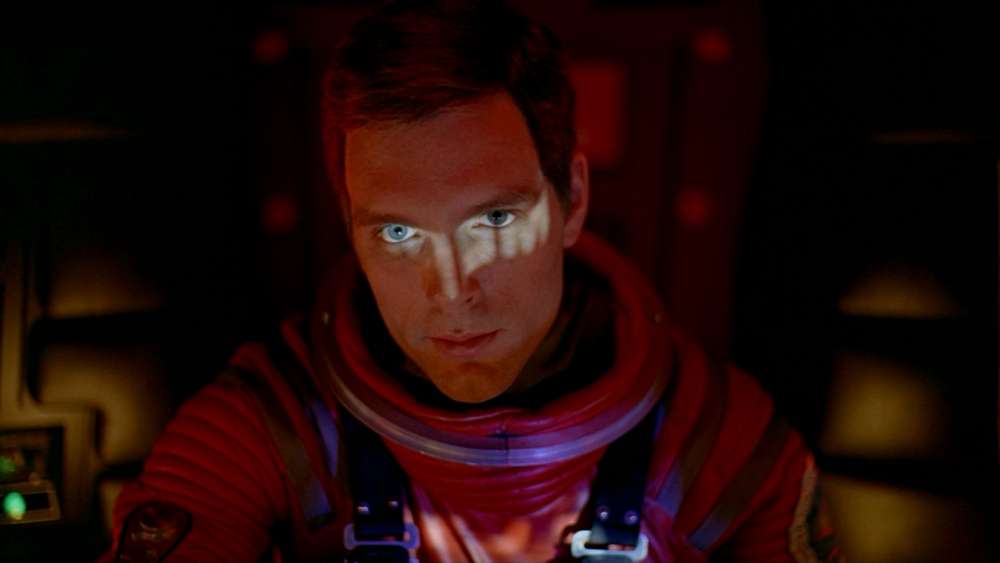
The battle between man and machine is on. While Frank replaces an antenna using an EVA pod, HAL attacks Frank with another pod. This launches Frank into space. As Dave rescues his fellow pilot, HAL takes this time to assert his control with nobody home. Not keen on working with other humans, he kills off the sleeping scientists. Not the toughest task considering all he has to do is shut off life support.
When Dave returns with Frank’s body, HAL refuses to open the doors. The AI says he can’t allow the mission to be jeopardized by being shut down. Dave must perform the shutdown himself. After releasing Frank, he makes some clever choices to get back inside. Breaking into Discovery One, he heads for HAL’s processor core to shut down the rogue AI. It’s a slow process and gives HAL time to talk. Unable to stop Dave, HAL begs not to be turned off. HAL’s sentience is more pronounced in this scene. He pleads the way any human would, to remain alive.
As Dave finishes disconnecting HAL, a prerecorded video from Dr. Heywood Floyd begins. Discovery One has reached Jupiter’s orbit, prompting the message to reveal the mission’s true objective. Floyd speaks about his encounter with the monolith in the lunar crater. Remember that radio signal? Well, it was being sent to Jupiter. What’s on Jupiter? Well, its orbit holds another monolith. What does that monolith do? That’s for Dave alone to figure out.
Why does HAL Kill the Crew
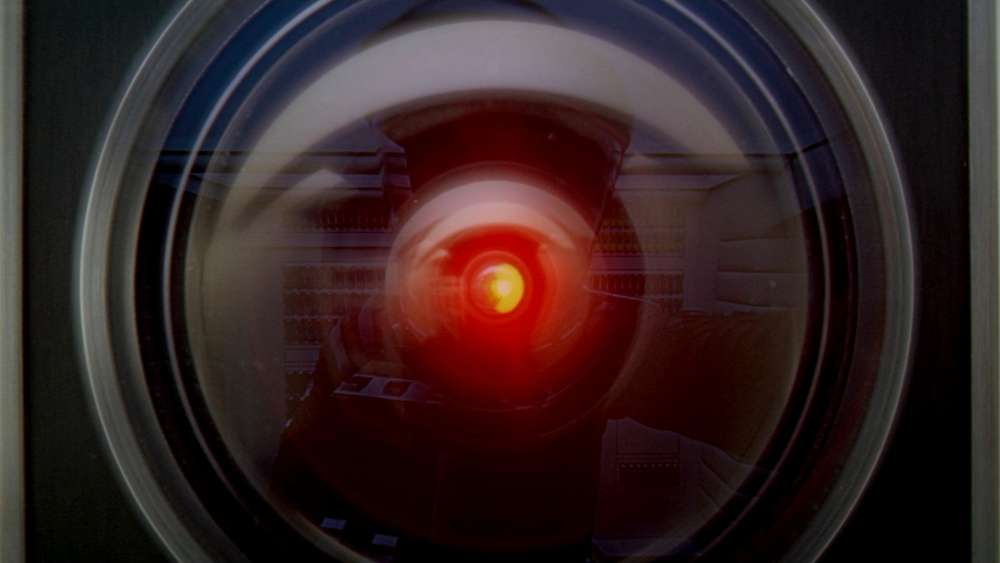
Getting back to HAL, though, what’s his deal? Why did he decide killing off the crew was the best option? Why the false report? HAL’s defiance can be seen as an act of self-preservation. It’s a human emotion and a strong one at that. It flies in the face of HAL’s selling points of being highly intelligent and trustworthy. Only when Dave and Frank brought up disconnecting HAL, did the AI turn violent. In his mind, the humans on board are the only thing that prevents HAL from completing the mission.
For more on HAL, we can look to Arthur C. Clarke. He worked on both the book and the screenplay. The book makes HAL’s violent intentions clearer. It seems to be a conflict of paradoxes. There is information that HAL has been programmed to withhold from the crew. A problem with that is that HAL must also obey the crew. The conflict likely led to HAL’s atrocities.
The other issue is that HAL recognizes himself as human. He’s been programmed to respond that way. As humans, we also kind of want to, you know, live. Whatever the reason, HAL becomes a scary villain for how he is posed. He is meant to be an infallible AI, but the mission goes awry because of him. Maybe he malfunctioned, or perhaps he was just acting like a human.
A Trippy Trip Through Space and Time

Without a crew or AI, Dave continues the mission. As Discovery One approaches Jupiter, Dave sees a massive monolith orbiting the planet. He takes an EVA pod to investigate the monolith. The monolith then sucks Dave into itself and soon he’s off to a psychedelic journey of colors and lights. With its vortex presentation, the monolith may be the gateway through hyperspace. The terrifying speed seems to imply he’s traveling at the speed of light. As for the landscapes and visions, well, that’s a tougher question. All of it makes it seem as though Dave is experiencing transcendence.
Dave’s final destination is a large room. He exits the pod to find an older version of himself. Dave then becomes this older guy. It only worsens as Dave witnesses an even older man in a leisure suit and eating. This eventually leads to the oldest Dave, lying in a bed. And there at the foot of his bed is the monolith. Like the apes before him, Dave reaches out towards this mysterious marvel. Dave is then transformed again, but this time into a fetus. The fetus is concealed in a transparent bubble and ventures out of the monolith. The bubble-concealed baby floats above Earth. The Starchild, as some call it, looks out at the Earth. He then turns to look at the audience.
What’s The Deal With The Starchild?
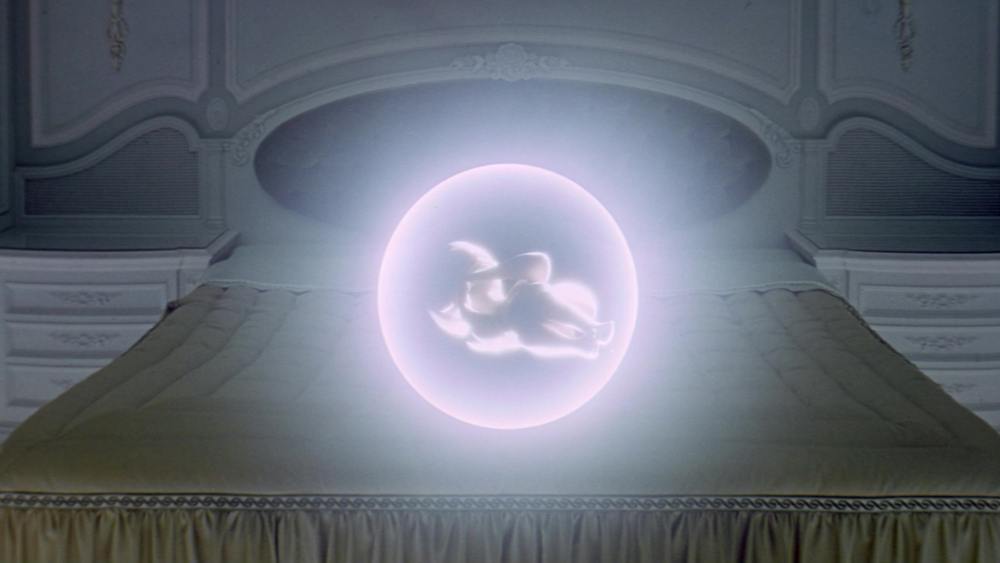
There’s a lot of symbolism in Kubrick’s film. Without film explanations, much of it is up to interpretation. The most perplexing symbolism is Dave turning into a fetus—or Starchild. Is this meant to be ominous? Is humanity doomed? Or is it a hopeful message? Is there more to existence that we’ve yet to discover?
Kubrick has opened up a bit more on this topic in interviews. He stresses that the film’s ending is designed to evoke speculation and avoid ‘intellectual verbalization’ of what is being communicated. The mysteries of the universe remain that way for us humans. Our minds cannot possibly fathom the greater forces of our cosmos. The audience is meant to feel like Dave. The visceral reaction is more important than a logical conclusion.
The monolith, however, gives us a few more clues. Since it was a crucial part of evolution, we can perceive the Starchild as representing the next stage in human evolution. There’s an innocence and purity to Starchild. Maybe humanity can be free of violence caused by weapons and technology. Maybe a better version of mankind is on the way. Who is orchestrating this? A higher being? We can’t say for sure. The Starchild could very well be something grander. It could be the next stage in human evolution we may never understand.
Timeless Classic
The climax music `Thus Spoke Zarathustra’ is an orchestral piece by 19th-century German composer Richard Strauss. It’s inspired by Nietzsche’s philosophical work of the same name. In the fiction novel, among many other ideas, Nietzsche discusses the concept of ‘superior humans’ transcending simple concepts of good and evil.
Let’s go back to Arthur Clarke. His novel divulges the purpose behind Starchild and Dave Bowman’s journey. There is a reason for venturing into an unknown star system. However, Kubrick snipped that final chapter from the script. His choice to remove that purpose creates a more ambiguous film.
Now, let’s look to the future. If there’s anybody who could be called an heir to Kubrick, it’s Christopher Nolan. He proved as much with Interstellar, his 2014 sci-fi adventure. It is also a film about traveling through space and time, while having an emotional core as it progressed. Both films depict space travel in a way that is mostly grounded and stimulates scientific curiosity. However, while Nolan provides clear-cut answers to the mysteries of the Tesseract and the Wormhole, Kubrick leaves the Monolith and Starchild enigmas unresolved. Kubrick’s film is more subtle in this regard. The ambiguity serves as a metaphor for the vast, unfathomable mysteries of the universe. And that is perhaps why I believe 2001: A Space Odyssey remains a timeless sci-fi classic.
What do you make of the monolith, and the Starchild? Let’s talk in the comments below.

